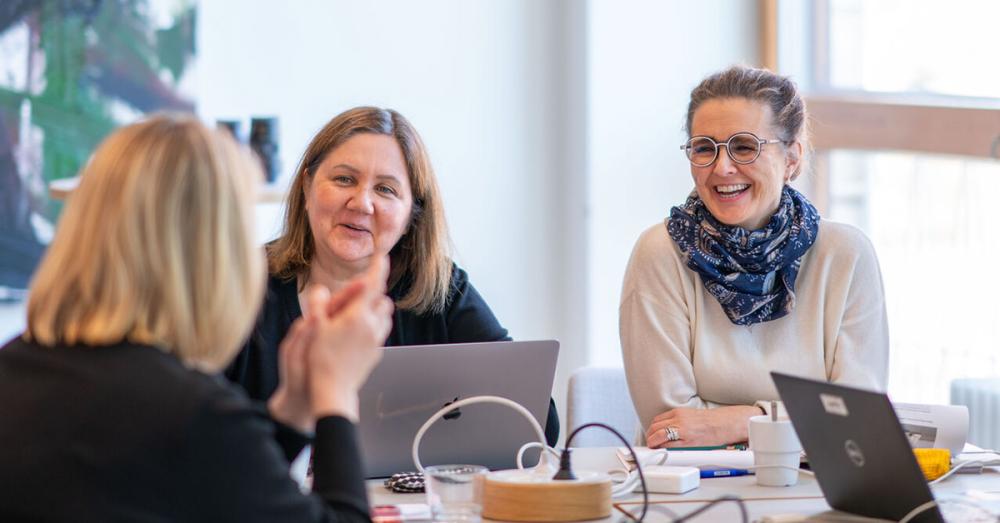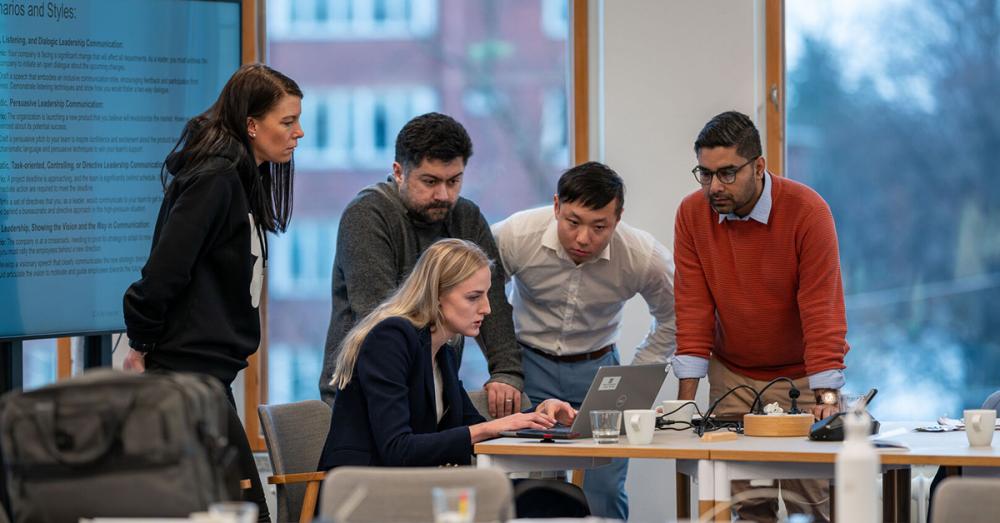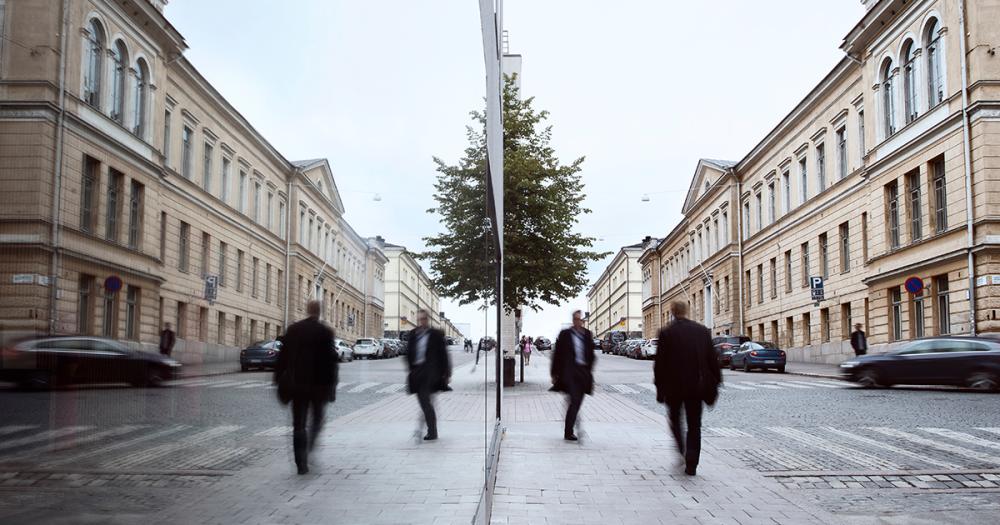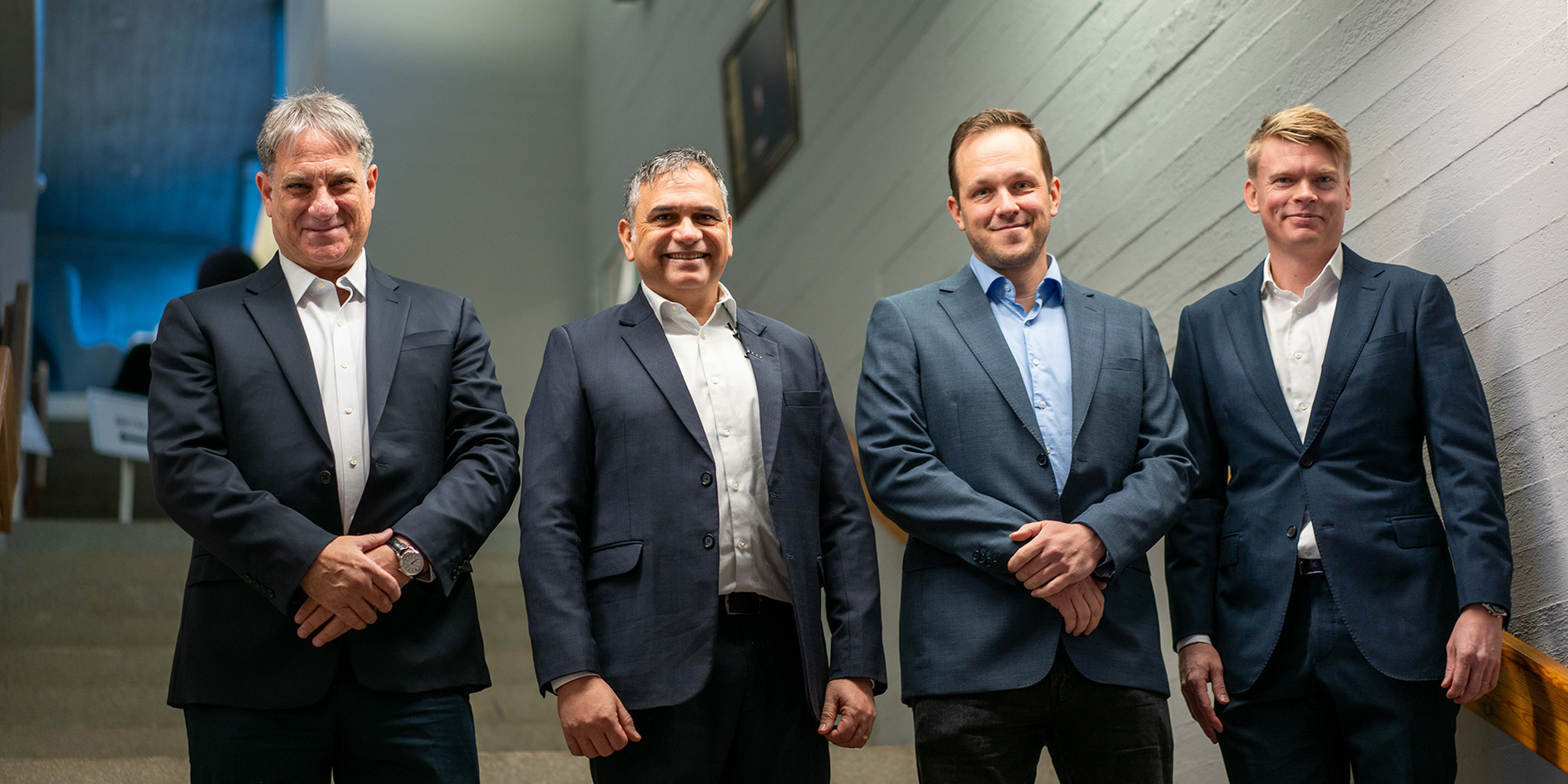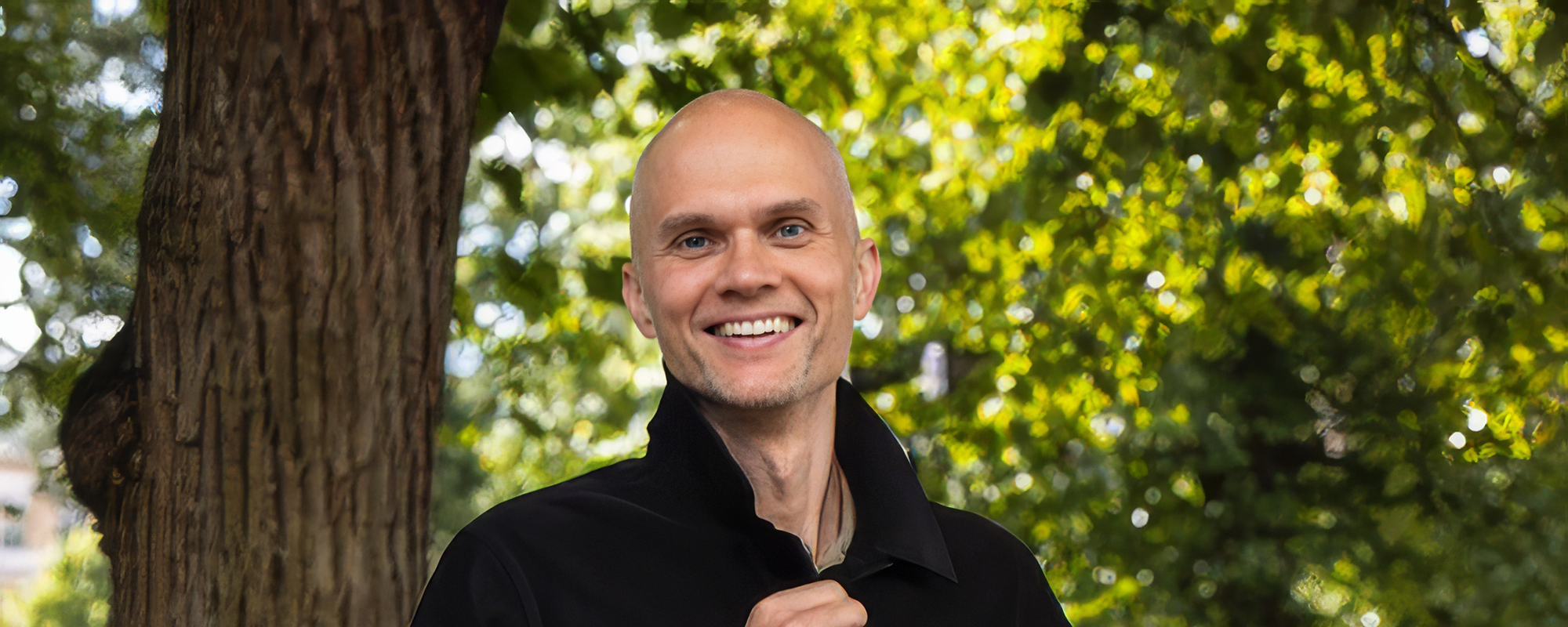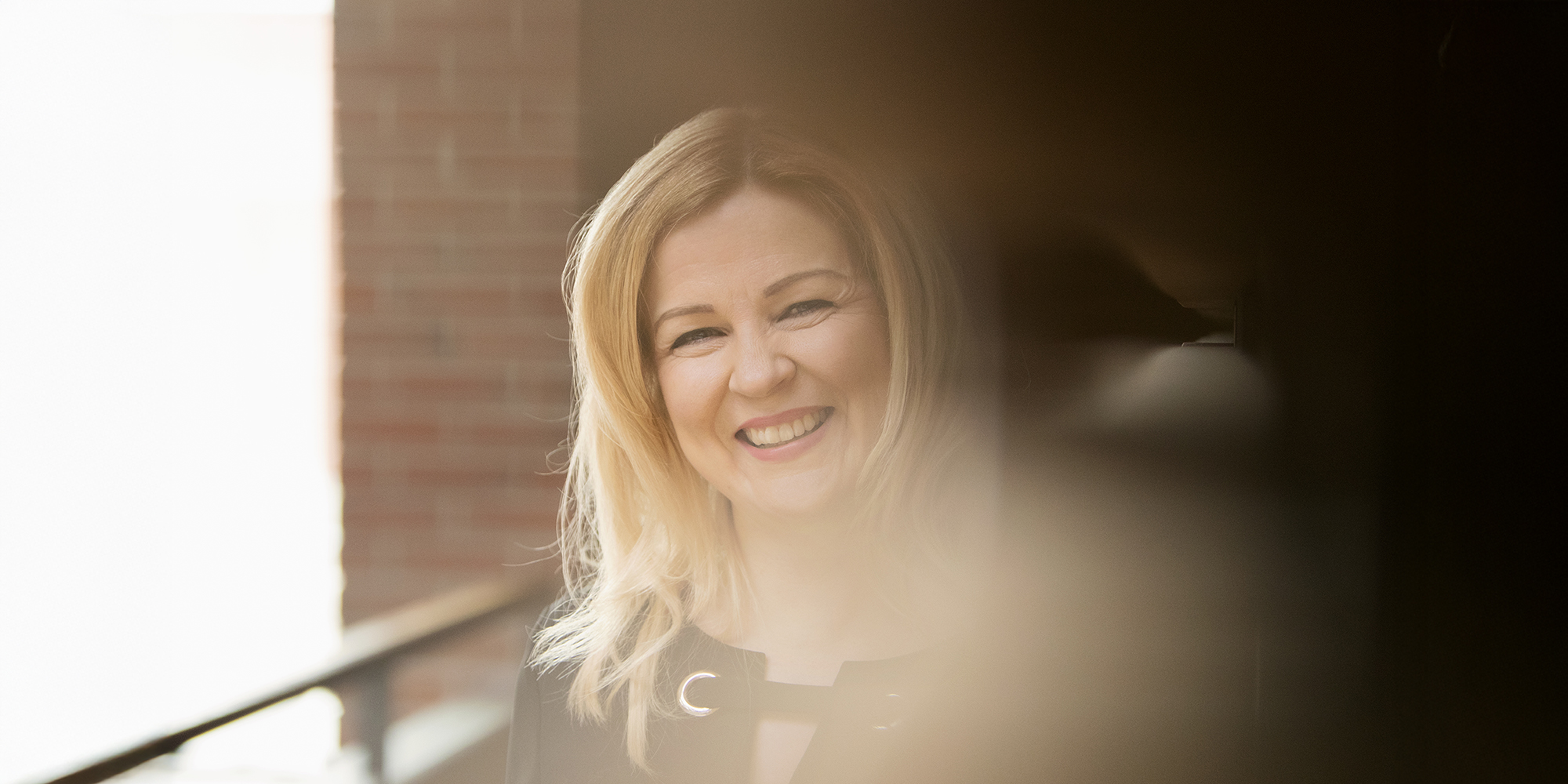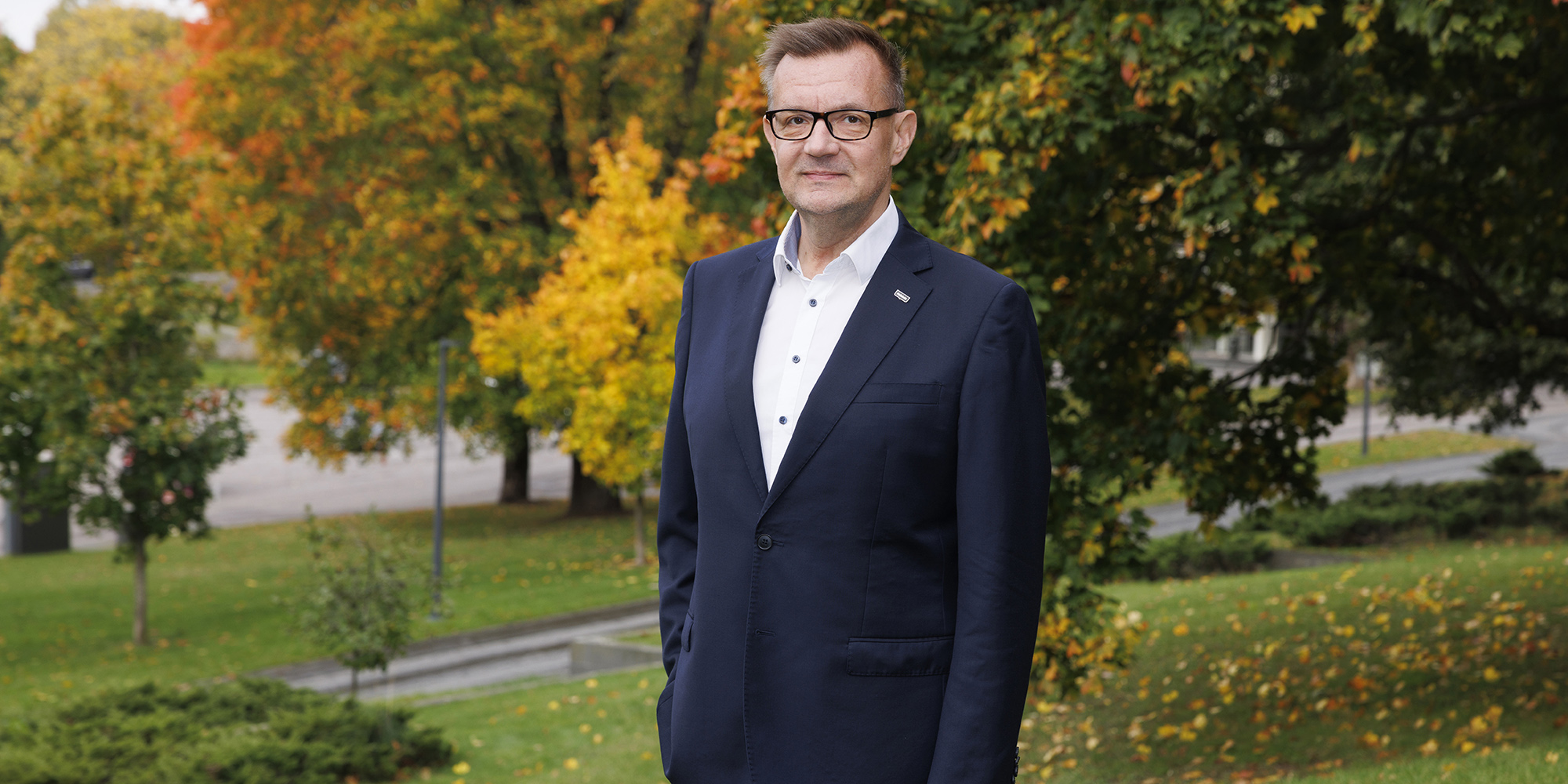The Stockholm office of Finnish law firm Hannes Snellman is located along Kungsträdgårdsgatan in the heart of the city, looking onto the plush Art Nouveau-style NK department store. The pandemic changed the outlook of the law firm’s employees, too.
When lawyer and partner Pontus Ewerlöf and the Dispute Resolution team under his charge revert their eyes from their laptops to gaze through the window, they may catch sight of a lakeside, snow-covered northern fells, or a residential neighborhood.
At Hannes Snellman, hybrid work – or multi-local work, as it is also called – is the name of the game. Although technology that combines onsite and offsite work has been around for quite some time now, it took a pandemic to separate work from a specific place. Our ideas of remote working and use of related technology caught up by 5–10 years within a single year.
The pandemic catapulted our work into the future. But now for the big question: Are we trying to get by in the new reality with our old ways?
The change is affecting expert and office work
During the Covid year, the transformation was fierce and the circumstances exceptional. The beginning left most of us out of breath and confused. There were major questions in the air: In the future, can I decide whether to work remotely myself? How do I lead a team that’s partly at the office, partly at home? How can I ensure their wellbeing if I don’t see them?
And above all: What will happen to the team’s joint afternoon coffees?
The last question is maybe the easiest to answer; perhaps nothing. At Hannes Snellman, Pontus Ewerlöf and his team have enjoyed hybrid coffees together nearly every day.
Hybrid work has become shrouded in the wildest visions and talk about “a change in the world order during the post-industrial era”, explains Eero Vaara, Professor of Organizations and Impact at the University of Oxford.
People have always been under the illusion that the biggest change in world history is happening right now."
Sure, remote work transforms the world of work, but there’s no reason to get too carried away.
“People have always been under the illusion that the biggest change in world history is happening right now. A share of work will change, but a share will not. The trend that is now escalating has been simmering for a long time”, says Vaara, who also heads the Future of Work research project and is Visiting Distinguished Professor at Aalto University.
A point to keep in mind is that the change is affecting expert and office work. Plenty of work remains that cannot be done remotely. Let’s take an example from Finland: The Quality of Work Life Survey from 2018 found that 57 per cent of Finnish salary earners worked in fields where remote working was not possible. The labor market is becoming divided: a share of work will continue to be linked to time and place also in the future.
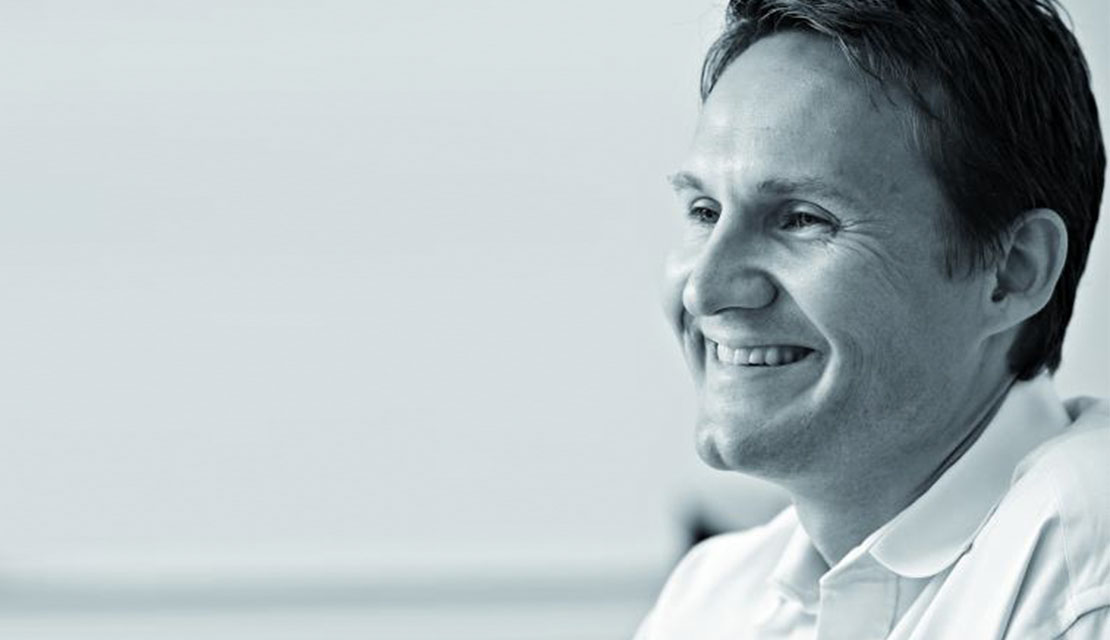 |
| A share of work will change, but a share will not, says Professor Eero Vaara. |
"Leaders need to be sensitive and careful listeners"
Ari Loukkola, Head of Customer Relationship Group at Senaatti-kiinteistöt, has noticed how opinions and predictions on hybrid work abound. Tensions naturally rise when things at work change.
“But extensive research data doesn’t exist yet. It will be available later.”
Loukkola’s tasks include maintaining and developing customer relationships and property assets as well as reforming government work methods. Both are crucial when it comes to separating work from place.
So far remote and hybrid work have typically been adopted by transferring former operating models and meetings online."
According to Loukkola, so far remote and hybrid work have typically been adopted by transferring former operating models and meetings online. Workspaces and tools have changed, but the tumult has only just begun. We’ll be getting somewhere when the context and ways of working are in sync. Hybrid work is a whole lot more than recalculating the size of the office space and perfecting the meeting technology.
It entails understanding changes in power relations and dynamics at the workplace. In the hybrid world, contacts are maintained through multiple channels, meaning there are fewer routine meetings with everyone present. This may result in hidden conflicts.
“These conflicts can escalate when not confronted as before. A supervisor may not notice disagreements down the line”, Vaara notes.
“Leaders need to be sensitive and careful listeners and think on the lines of empathy, smoothness and coordination”, Loukkola adds.
Hybrid is not a blend of old and new
Doctoral candidate Nora Rosendahl echoes the notions. “Hey – let’s take the best bits from the office and the best bits of remote work, put them together, and off we go”, Rosendahl describes the transition into hybrid work tongue in cheek. She is COO at coaching company Hintsa Performance.
It is of course not how it works. Instead of being a blend of old and new, hybrid means creating something totally new.
“It’s a bit like enjoying both soccer and chess, deciding to join them up, and thinking it will work. But that’s not how it goes – you create a whole new sport in the process.”
You’d first need a few rounds of soccer chess or chess soccer to see what surprises ensue from putting the two together. A new sport needs new rules.
“So far, we don’t know the effects of combining office and remote work. It’s why hybrid work needs to be seen as an experimentation”, says Rosendahl. “We need to ask questions, try things out, develop. How do we work together, what challenges do we face, what new, perhaps surprising working methods emerge?”
A successful transition into hybrid work is a shared experience of the organization rather than dictated by management.
The question to ask is what type of model ensures a smooth working process."
Professor Eero Vaara mentions that because people and networks are different, a general rule of “do this” is not the way ahead.
“But it is important to make some agreements. The question to ask is what type of model ensures a smooth working process.”
Hybrid work is part of a phenomenon that changes the nature of organizations. Boundaries become blurred and companies increasingly networked. Power becomes decentralized but will not disappear even when former structures dismantle. From a leadership perspective, the challenge is to stay clear on how and where power manifests itself. Eero Vaara says that a large share of expert work has already given up the “director and subordinates” thinking.
“As a principle, everyone needs to drive issues and agree together. Similarly, it is everyone’s job to look out for each other. I have never been a fan of self-management, but it is a clear trend”, says Vaara.
Remote work requires determining one’s workload and dedication in a different way than at the office. Nora Rosendahl mentions that situations with plenty of options and openness can be a burden to many. The rules were clear before: in pre-Covid times, we were at the office, during Covid we are at home. Now for the first time anything is possible, and people need to consider how to handle the responsibility that comes with all the openness and freedom.
“It’s about defining new operating models. They impact both company profit and people’s wellbeing and coping skills. Done well, it could instantly reform the culture and working methods. That’s the big thing – not whether or not we are at the office”, accentuates Rosendahl.
Safety and inclusivity above all
Let’s pour the tea and coffee and chew on all this for a moment. Who’s turn was it to bring the cookies?
Hannes Snellman is a law firm that employs 350 people. Hybrid work is one of its focus areas this year. There’s plenty to consider.
“Nobody knows how this will work out, but that’s exactly what makes it interesting”, says Riikka Rannikko, Managing Partner at Hannes Snellman in Helsinki.
Helsinki-based Rannikko and Stockholm-based Ewerlöf have combined onsite and offsite meetings for a long time.
Now trips between the two cities will be less frequent; Ewerlöf estimates that instead of the two monthly trips to Helsinki, one will suffice in the future. There is no point in travelling just for a few hours, but with a continued need for live meetings, the fewer trips will be longer. It also enhances work efficiency and reduces the carbon footprint. Rannikko predicts that travelling will center on new customer relations. Trust is built face-to-face. It’s easier to discuss sensitive topics with everyone present.
Wishes and thoughts are far-ranging. Some wish for clear rules on how many days a week they need to be at the office, while others are after as much freedom as possible."
“As a group, we then need to discuss how it would feel if some would take part remotely.”
In formal and informal meetings alike, Rannikko believes there is one thing that counts above all: “Whether people feel safe and included. If the answer is yes, things are good.”
At Hannes Snellman, surveys have been carried out to find out employee wishes for hybrid work.
“Wishes and thoughts are far-ranging. Some wish for clear rules on how many days a week they need to be at the office, while others are after as much freedom as possible”, says Rannikko. “It’s useful to seek different views, so everyone is aware of the spectrum that needs to be reconciled.”
Rannikko explains that job descriptions expanded and changed during the pandemic also at her workplace. Many have gained a much more multidimensional view of the law firm’s operations, which will be useful also in the future.
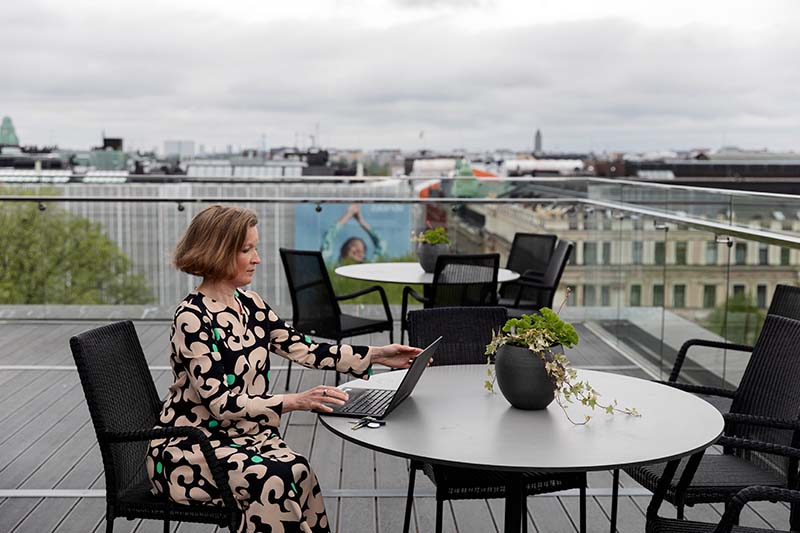 |
| Job descriptions expanded and changed during the pandemic also at Riikka Rannikko's workplace. Photo: Touko Hujanen |
"Directors who are rushing around may forget about leadership during hybrid work"
A common concern about remote work is the lack of communality. How has this been considered at the law firm, in addition to the virtual coffee times of course?
Rannikko got into the habit of writing a weekly letter at the start of the pandemic in March 2020.
The themes have ranged from May Day festivities to a remote Christmas party and celebrating deals. The weekly letter has become a replacement to chats at the office. Rannikko has a feeling it has also lowered the threshold for employees to get in touch with her.
Pontus Ewerlöf has missed walking around the office and “those 5–10-minute meetings” leaning against a colleague’s partition or sitting on the sofa. He is planning on working one or two days a week from home in the future.
Leadership must adapt to a changing operating environment. It takes humility.
“Directors who are rushing around may forget about leadership during hybrid work. That’s when people end up sitting alone in their homes or cottages” Ewerlöf says. “The most important thing is not to forget about anyone and having one-on-one sessions with everyone.”
What type of physical space do we need in the future?
What share of work will be remote in the future? The answer depends on the company and industry. A need for less office space or change of location is clear. Directors are busy calculating percentages and drawing up scenarios.
For instance: The 300,000 employees of Japanese telecom company NTT can choose (at least in theory) in which of the 3,300 offices around the world they want to work. NTT makes use of the global network of office provider IWG.
Also workspaces are changing, and it is not simply a question of rethinking the number of required tables and chairs.
“New premises, new ways. An organizational reform won’t necessarily happen without revamping the workspace”, Ari Loukkola highlights.
The Finnish government is developing an ecosystem of multi-local work, which could involve people from different departments working in government offices scattered around the country. The buildings will become co-working spaces. Silos will soon be a thing of the past, at least when it comes to physical spaces.
Work is a relationship, and it’s not good to be alone in a relationship."
What type of physical space will be needed in the future? Directors should think carefully from both a strategic and cost-related perspective about how their premises are used and needed.
“Face-to-face work needs to clearly provide added value for the organization and individuals. Why do we turn up at the office is a valid question in many areas.
Encounters are needed in order to engage, ensure strategic execution, and experience a sense of safety and belonging. Cooperation, ideation, coordination, wellbeing, and coping – good reasons for a day at the office?
One totally valid reason to turn up at the workplace is a lack of space and peace to work at home.
“Organizations need to think about meeting points. Employees not turning into hermits impacts productivity”, describes Loukkola. “Work is a relationship, and it’s not good to be alone in a relationship.”
Hybrid meetings require joint rules and practices
Managing Partner Riikka Rannikko lists her upcoming meetings:
Three-person management team
All Helsinki and Stockholm group leaders
All Helsinki group leaders
Helsinki partners
Mergers & Acquisitions team
Young lawyers’ breakfast
Senior lawyers’ breakfast
Entire Helsinki office
Helsinki and Stockholm offices
Hannes Day
Hannes Academy
Client meetings
The list is not that out of the ordinary; the lives of managers and directors are filled with meetings. Smoothly running meetings are an essential part of office work that need separate attention during the hybrid era.
“Client meetings are the easiest to figure – they go according to what the client wants.”
Otherwise Rannikko paints a varied picture of offsite, onsite and hybrid. It comes as a bit of a surprise to hear her say that usually the management team works fine remotely.
“We know each other well enough for it to work. But we do need to meet up a few times a year. All management team work requires sitting down together and digging deeper at times.”
According to Rannikko, it is worth experimenting to find a suitable format for meetings. Arranging remote mass meetings for the entire personnel is straightforward, also if some take part from the office. It makes the speaker’s life easier to see their audience and get at least some sort of a reaction. An audience of three hundred will obviously not result in a lively discussion, whether live or remote.
“Instead it’s important to make sure they can return to the themes in group meetings later on”, says Rannikko.
Medium-sized meetings are the trickiest – ones that should in principle spark conversation, but which the hybrid format tames down. You need to be careful not to create a sense of inequality.
To address the problem, Rannikko and partners planned that also personnel taking part from the office would do so from their own computers. It creates an equal footing.
It is paramount that hybrid meetings have joint rules and practices that people also follow.
"Trials became hybrid astonishingly quickly"
Ewerlöf’s Stockholm team has fifteen members. Some of them take part in morning meetings from the office, others from elsewhere.
“If four or five participate from the office, we switch on the big screen. I lead meetings both from the office and from home.” The current practice is still forming and is prone to change.
Ewerlöf has a more nuanced view of onsite and offsite work than the average employee – he has after all gained a sharper insight at hybrid expert and court hearings.
“Trials became hybrid astonishingly quickly at the start of the pandemic.”
Stockholm is one of the global hubs of arbitration; resolving disputes between multinational companies as an alternative to litigation.
Experts are no longer flown in from the other side of the world for the sake of a hearing that lasts a couple of hours.
However, Ewerlöf does not see litigation or arbitration becoming completely virtual – lengthy cross-examinations would pose a problem if done virtually.
“As long as preparing and hearing the expert take the same format. If the hearing is remote, also the preparation should be.”
Testifying is completely different when physically present at court than virtually.
“A witness blushing, scratching their ear and being nervous become highlighted on camera, as he or she is the only person you see. In the courtroom, you see the whole setting.”
While the situation is still new, the hybrid format accentuates a need to examine human reactions and keep making assessments. According to Ewerlöf, the hardest part of hybrid hearings is not seeing the entire courtroom and the witness not getting to sense the atmosphere.
“It’s a bit like watching soccer on the television compared to being in the audience. The atmosphere isn’t the same.”
Heading into new times means letting go of past ways
Taina Tenhunen heads the Tech and Innovation team at Hannes Snellman. Together with her team, she seeks and tests new applications for the company. In addition to IT security and functionality, the key question for adopting new tools is what added value they can bring for the organization. The answer is not easy when it comes to a hybrid model. New technology must never be an end in itself.
Tenhunen has noticed that heading into new times means letting go of past ways. The number of tools cannot be on a constant rise.
“Communication is always the challenging part – making sure everyone is on the same page.”
Sometimes the multiple messaging channels leave even Tenhunen frustrated. This hotchpotch is a problem of our times: email, Slack, Teams, Zoom, WhatsApp groups, OneNote…
“Major frustration: I can’t take it, too many channels. Maybe in the end only a few will remain in use”, she speculates. One lesson has been to clearly agree on the channels that are used. Whether cameras should be on or off is another point to agree on. Some don’t like them, others do.
“Having a camera switched on all day is more draining than being physically present. The camera puts you in the spotlight for the whole time”, she says.
Suitable methods for virtual discussions and catch-ups have been discussed both with the whole team and each member. Different methods suit different people."
Hybrid leadership means agreeing on technical practices of this type on the one hand and listening carefully on the other.
Tenhunen’s own leadership has transformed during remote work. She now has more joint meetings and regular get-togethers with each team member than before.
“Suitable methods for virtual discussions and catch-ups have been discussed both with the whole team and each member. Different methods and combinations suit different people.”
The team has talked about spending certain days at the office. Many have missed the opportunity to bounce smaller issues off each other.
“In a virtual world, you have to think more about what share of a meeting should be dedicated to work-related matters only, and how much time can be spent chatting on topics that don’t necessarily relate to the subject of the meeting.”
“It is likely that common rules are agreed upon surprisingly quickly. Current concerns may turn out just as unfounded as the worry over people starting to slack when working from home.”
"Traditionally, we reward performance. But how could the organization also reward recovery?"
When Hannes Snellman established his law firm back in 1909, the office was open for two hours a day. The office is still not open 24/7, yet for a long time, work has been carried out beyond official office hours.
One of the question marks of hybrid work is how to draw a line between work and leisure time. Nora Rosendahl from Hintsa Performance would include wellbeing as part of people strategy and leadership of the hybrid era. This is where middle management is needed.
“Immediate supervisors have become vital. It is their job to stay in contact with people, figure if they seem stressed, tired or up to the game, and find out how they can be supported, helped, or given more tasks.”
The mood matters – it reflects strongly on company operations. “The myth of a good employee is that they are hard-working, willing to make sacrifices, answer emails well into the night, and ready to work at the weekends. But we know it is not good for performance or wellbeing”, says Rosendahl.
For Rosendahl, one of the key questions is how to support supervisors and guide them in rewarding recovery. It’s a theme she has brought up regularly with Hintsa’s clients lately.
The transition into leisure time should be marked with whole new rituals now that there are no commutes."
“Traditionally, we reward performance. But how could the organization also reward recovery? Hey, it’s great that you’ll be taking a four-week vacation, enjoy a long weekend, or take the Friday off following a tough project. How could these be rewarded alongside performance?”
Loukkola from Senaatti-kiinteistöt skipped his vacation in the Covid spring when travel was out of the question.
“It was a mistake. Take your vacations and long weekends. On the whole, the transition into leisure time should be marked with whole new rituals now that there are no commutes.”
Read also: What Do People Think about Hybrid Work When It's All They Know?
Did you enjoy this long form? If your answer is yes, you can find more long forms here. You can also sign up for our Aalto Leaders' Insight Highlights newsletter to enjoy the fresh stories as well as invitations to free webinars. See more information below.

